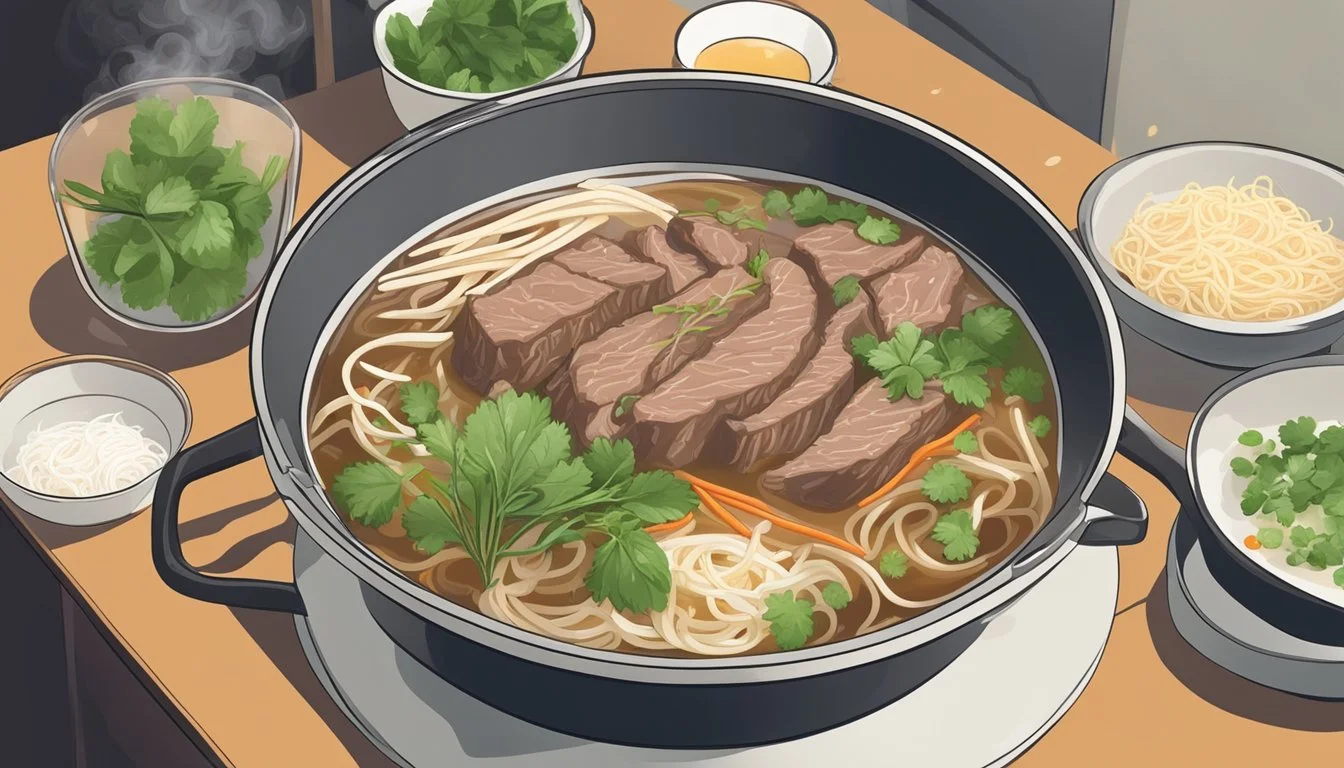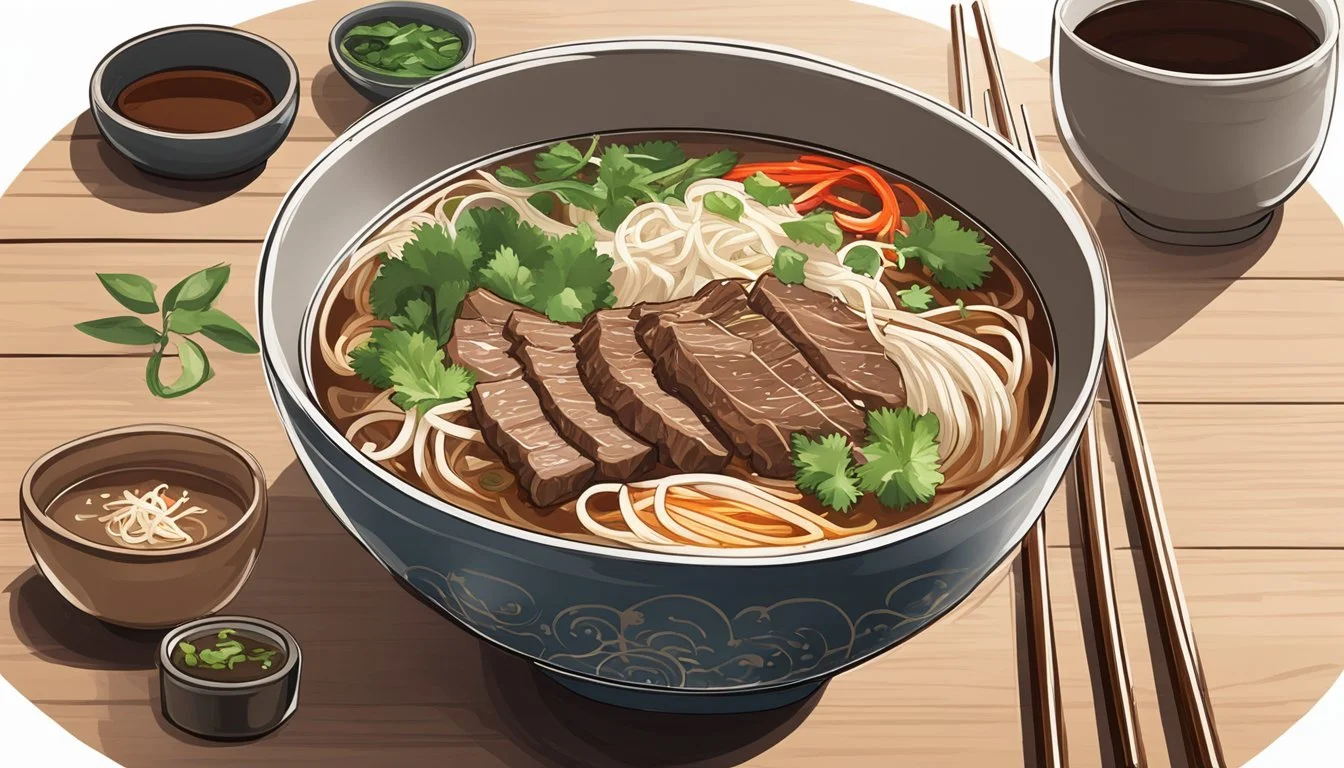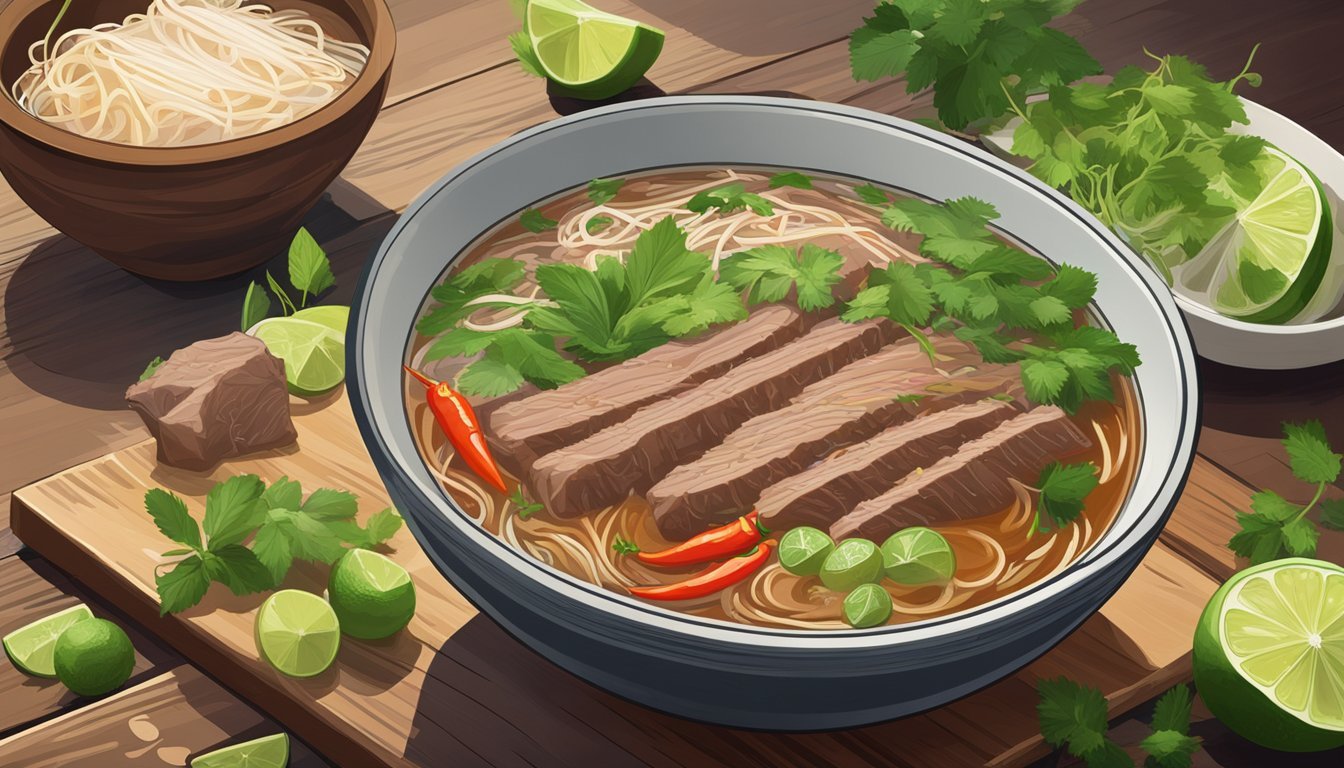How to Reheat Beef Pho for Maximum Flavor and Freshness
Reheating beef pho, a beloved Vietnamese noodle soup, is not just about warming up a dish, but preserving the integrity of its rich flavors and textures. Whether you've brought home leftovers from a local restaurant or saved a portion from your homemade batch, knowing how to reheat beef pho properly can make all the difference. The key to perfectly reheated pho lies in separating the components and heating them appropriately.
For those looking to reheat a large portion, the oven can be an excellent option. By keeping the broth and noodles separate, you avoid mushy noodles and enjoy a soup that tastes freshly made. Similarly, using the stove or microwave are effective methods, each requiring a bit of care to ensure that the broth is hot enough to re-invigorate the noodles and beef without overcooking them.
This guide will walk you through the steps of reheating beef pho using various methods, ensuring you enjoy every last drop of this savory Vietnamese delicacy. From maintaining the tender texture of the noodles to preserving the aromatic broth, follow these tips for a deliciously warm bowl of pho that feels as satisfying as when it was first made.
Understanding Pho
Pho is a traditional Vietnamese soup that features a flavorful broth, rice noodles, and a variety of garnishes. This section will explore its components and provide insights on how to store leftover pho properly.
Components of Pho
The broth is the heart of pho, typically made by simmering beef bones with spices like star anise, cinnamon, and cloves. This process can take hours to extract the deep, rich flavors.
Noodles used in pho are rice noodles, which are soft and slightly chewy when cooked. They have a neutral taste, allowing them to absorb the flavors of the broth.
Meat choices often include thin slices of beef such as brisket or flank. The meat can be cooked in the broth or added raw to be cooked by the hot broth.
Fresh herbs and garnishes like Thai basil, cilantro, lime wedges, and bean sprouts add freshness and complexity to the dish. These ingredients are typically added just before serving.
Storing Leftover Pho
When storing leftover pho, it’s essential to keep the components separate to maintain their quality. Store the broth in an airtight container in the fridge. It can be kept for up to 3-4 days.
Noodles and meat should be refrigerated separately in containers to prevent the noodles from becoming too mushy and the meat from absorbing too much moisture.
Herbs and garnishes should be stored at room temperature or in the fridge, depending on the ingredient, to keep them fresh. Ensure to use airtight containers or resealable plastic bags.
By keeping these components stored correctly, reheating and enjoying leftover pho becomes much easier and preserves its original flavors.
Preparing for Reheating
When reheating beef pho, it is crucial to properly separate and portion the components to ensure the best taste and texture. This process involves separating the solids from the broth and portioning the ingredients efficiently.
Separating Solids from Broth
First, start by removing the beef, noodles, and any other solid ingredients from the broth. Use a strainer to ensure all solids are fully separated. Place the noodles in a separate bowl and the beef in another.
Refrigerate the solid ingredients and broth separately if they won't be reheated immediately. This helps in maintaining their freshness and prevents the noodles from becoming too soggy. Label and date both containers to keep track of their storage time.
Portioning for Reheating
When ready to reheat, divide the components into small portions. This allows for even heating and prevents overcooking. Small portions reheat more effectively, providing a consistent temperature throughout.
Consider using microwave-safe bowls or pots that are suitable for the stovetop. Labeling the portions can help in recalling when they were refrigerated and can prevent reheating the same portion multiple times.
By following these straightforward steps, your leftover pho will retain its flavor and quality, ready to enjoy as if freshly made.
Reheating Beef Pho
Reheating beef pho properly ensures a delicious and safe-to-eat meal. Different methods can be used, including stovetop, microwave, oven, and slow cooker, each requiring specific steps to maintain the perfect balance of flavors and textures.
Stovetop Method
Using the stovetop is one of the most effective ways to reheat beef pho. Begin by separating the broth and noodles. Pour the broth into a pot and heat it on medium until it reaches a simmer.
At the same time, place the noodles in a separate bowl and add just enough hot broth to cover them, allowing them to warm up without becoming mushy. This method ensures even heating and preserves the texture of the noodles. Add any leftover beef or vegetables towards the end of reheating to avoid overcooking.
Microwave Reheating
The microwave is a quick and convenient option for reheating beef pho. Start by placing the broth in a microwave-safe container. Cover it with a microwave-safe lid or plastic wrap to trap steam and maintain moisture.
Heat the broth in 30-second increments, stirring in between to distribute the heat evenly. Once the broth is hot, add the noodles and microwave for another 1-2 minutes. It's important to stir halfway through to ensure even heating. This method saves time but requires careful attention to avoid overheating.
Oven Reheating
Reheating pho in the oven is less common but can be quite effective. Preheat the oven to 350°F (175°C). Place the broth in an oven-safe dish and cover it with aluminum foil to prevent moisture loss. Reheat the broth for about 15-20 minutes or until it reaches the desired temperature.
Add the noodles to the dish during the last 5 minutes of heating to ensure they are warmed through without becoming too soft. This method provides steady and even heat, making it a good option when reheating large portions.
Slow Cooker Reheating
Using a slow cooker to reheat beef pho helps to maintain the dish's flavors and textures. Start by transferring the broth to the slow cooker and setting it to low. Allow the broth to heat for approximately 1-2 hours until it reaches a rolling boil.
Add the noodles and any other ingredients during the last 15-20 minutes to ensure they are heated through without overcooking. The gradual heating process of the slow cooker preserves the taste and consistency, making it ideal for those with time to spare.
Preserving Quality and Safety
Reheating beef pho while maintaining its quality and safety involves careful attention to avoiding overcooking and maintaining flavor and texture. These principles are critical to enjoy a delicious and safe meal.
Avoiding Overcooking
Overcooking can lead to a mushy texture and loss of flavor. When reheating beef pho, the broth should be heated separately from the noodles and meat. Use a microwave or stovetop to bring the broth to a simmer, not a boil.
Microwave Reheating:
Place the broth in a microwave-safe container.
Cover with a lid to trap steam.
Heat on high in 30-second increments, stirring between intervals.
Stovetop Reheating:
Pour the broth into a saucepan.
Heat on medium until it starts to simmer.
Avoid prolonged heating to prevent overcooking the ingredients once they are combined.
Maintaining Flavor and Texture
Ensuring that the beef pho retains its original flavors and textures is essential. To maintain quality, reheat the noodles and meat just before serving.
Microwave Reheating:
Add the noodles and meat to the hot broth in the microwave.
Heat for an additional 1-2 minutes until evenly warmed through.
Sous Vide Method:
Place noodles, meats, and broth in separate sous vide bags.
Heat each component individually at 135°F (57°C) to ensure even warming without overcooking.
Combine the components just before serving. This method preserves the texture of the noodles and the tenderness of the meat.
Maintaining proper food safety practices is also crucial. Always ensure that the reheated pho reaches a safe temperature of 165°F (74°C) to prevent foodborne illnesses.
Enhancing the Pho Experience
Elevate the flavor and enjoyment of your reheated beef pho by incorporating fresh elements and adjusting seasonings to your taste.
Adding Fresh Elements
Fresh ingredients can significantly enhance the texture and flavor of your pho. Consider adding bean sprouts, which provide a refreshing crunch. Basil and cilantro not only boost the aroma but also introduce a layer of herbal freshness. For a tangy kick, squeeze lime wedges over your soup right before serving.
Including sliced beef adds a protein element, making the dish more filling. Chili peppers can be added for those who prefer a spicy twist. A combination of crisp vegetables and fresh herbs ensures that every spoonful is vibrant and lively.
Adjusting Seasonings
Seasoning your pho correctly is crucial for achieving a balanced flavor profile. If the broth tastes bland after reheating, consider adding a touch of hoisin sauce or sriracha. These enrich the broth with a sweet and spicy depth.
To elevate the broth, sprinkle some additional spices like cinnamon or star anise while reheating. These spices will gently infuse the broth, enhancing its complexity. Adjust the saltiness by adding a pinch of salt or fish sauce as needed. Tasting and refining as you go ensures a well-rounded and delicious bowl of pho.
Final Touches
When reheating beef pho, attention to detail makes all the difference.
Ensure quality beef such as sirloin or flank is used. These cuts perform well in reheated dishes.
Maintain an optimal temperature. The broth should be hot enough to warm the beef and noodles but not boil, as boiling can alter the delicate flavors.
Garnishes add freshness. Common options include:
Fresh basil
Cilantro
Lime wedges
Bean sprouts
Sliced chili peppers
Stirring frequently as the broth heats helps achieve uniform warmth. Skimming the surface removes any impurities or fat and enhances clarity.
Best practices include reheating broth separately from noodles and meat. He suggests that broth be heated over medium heat on the stove. Noodles should be added once the broth is hot.
Sensory checks, like tasting for seasoning balance, ensure all elements are just right.
Lastly, serve immediately to preserve the sensory appeal of this flavorful dish.





